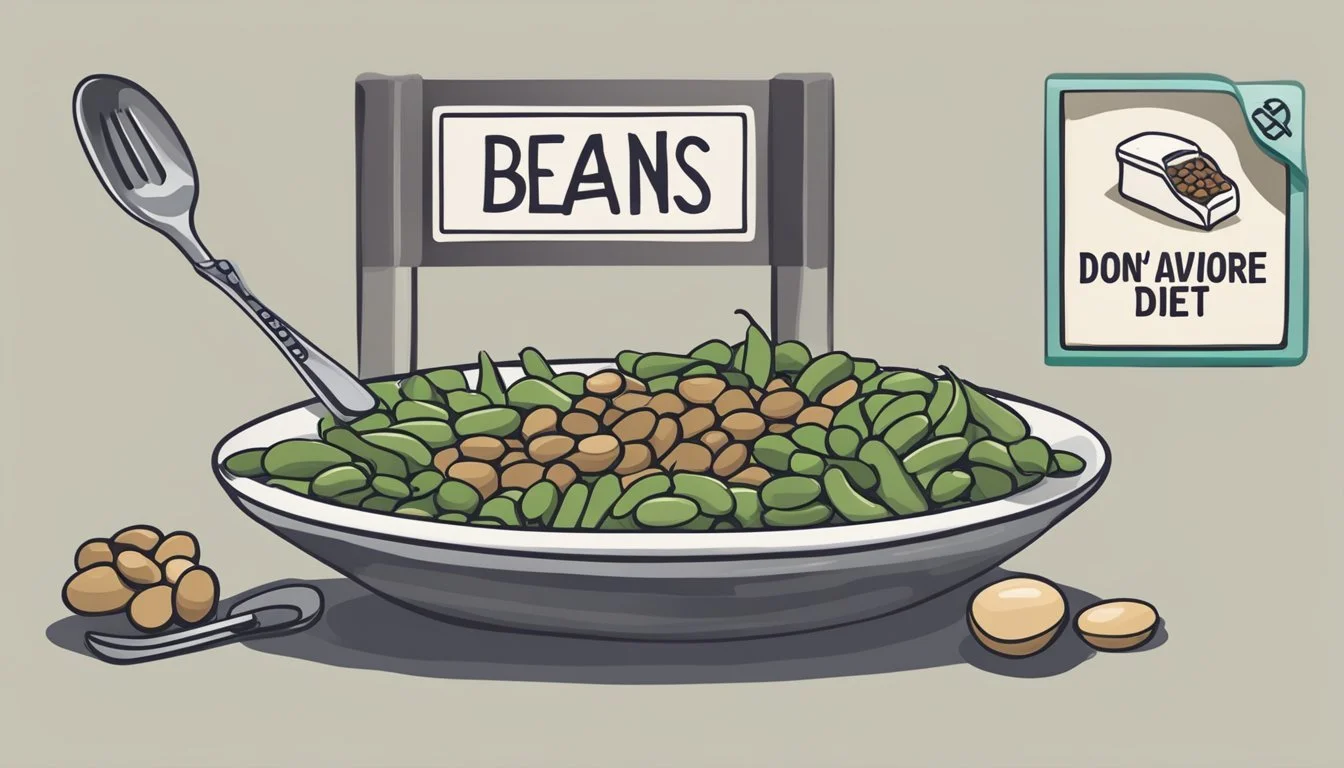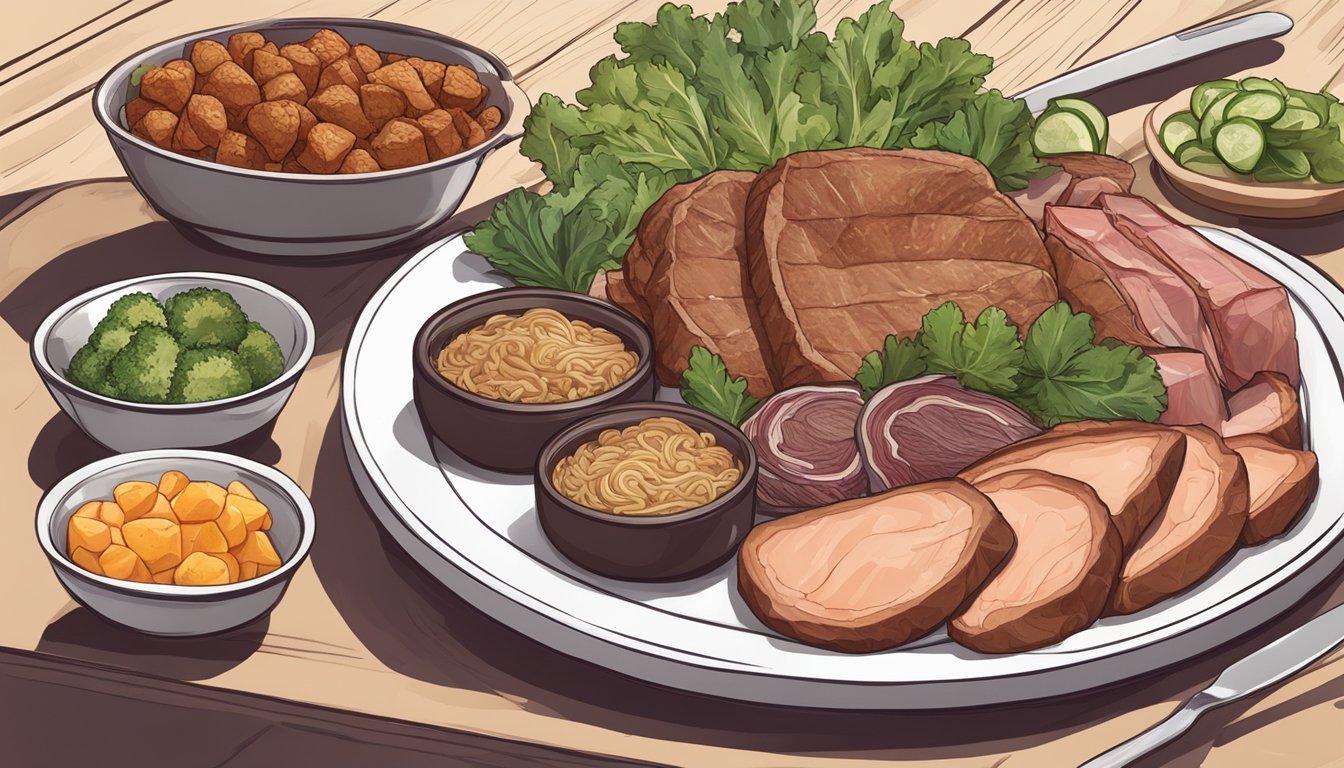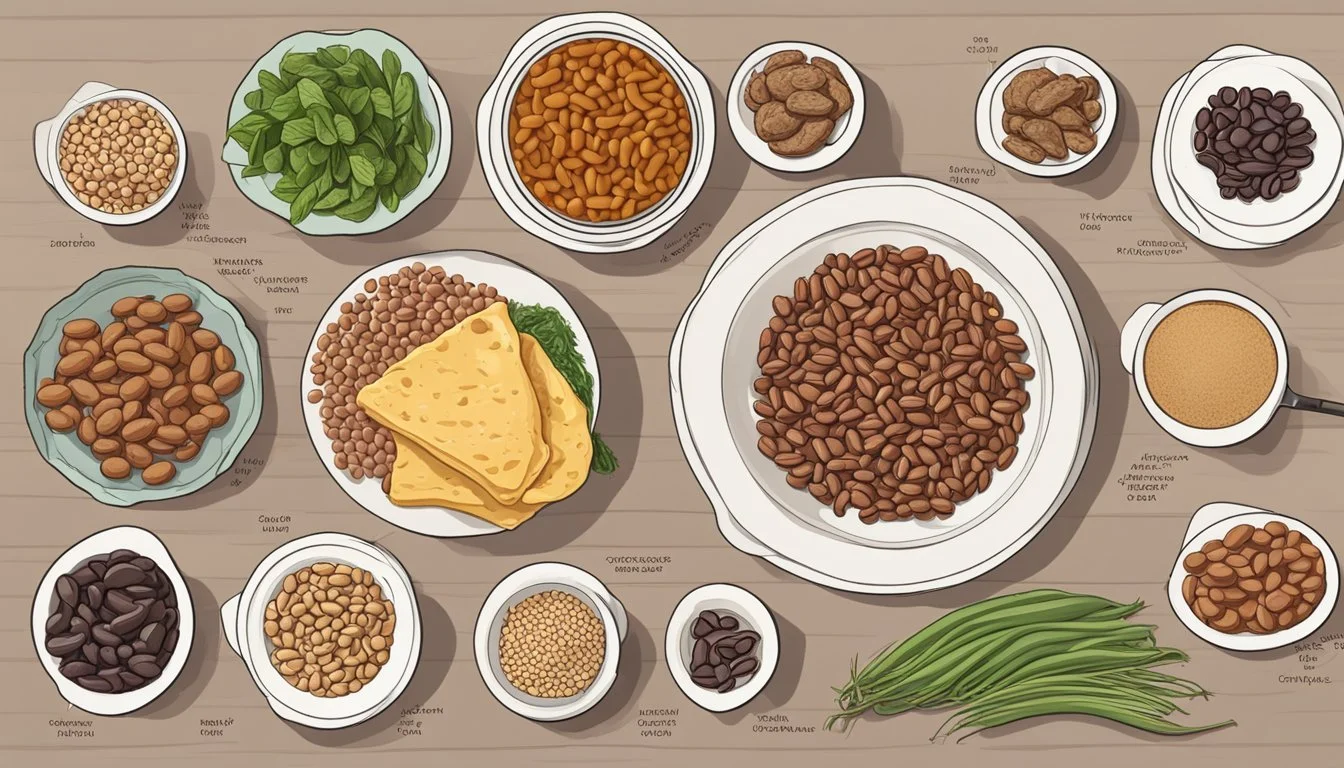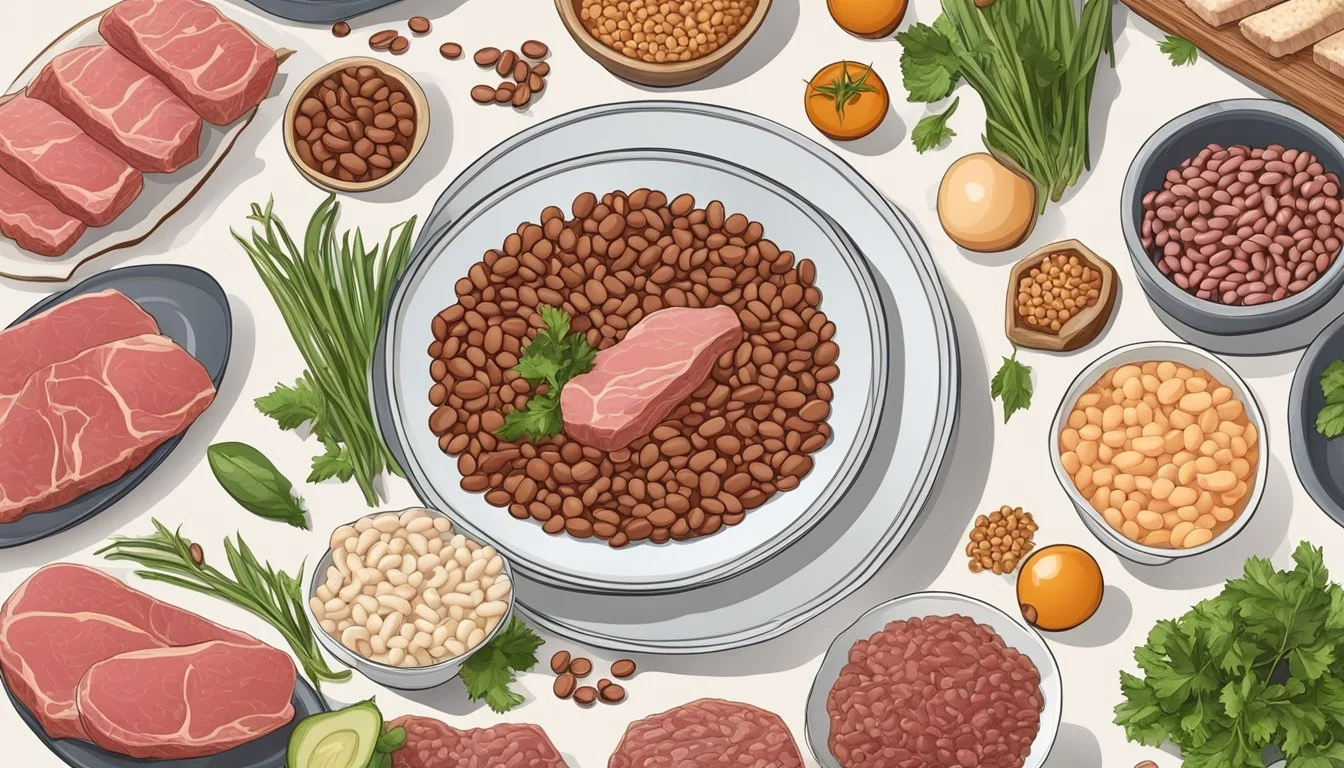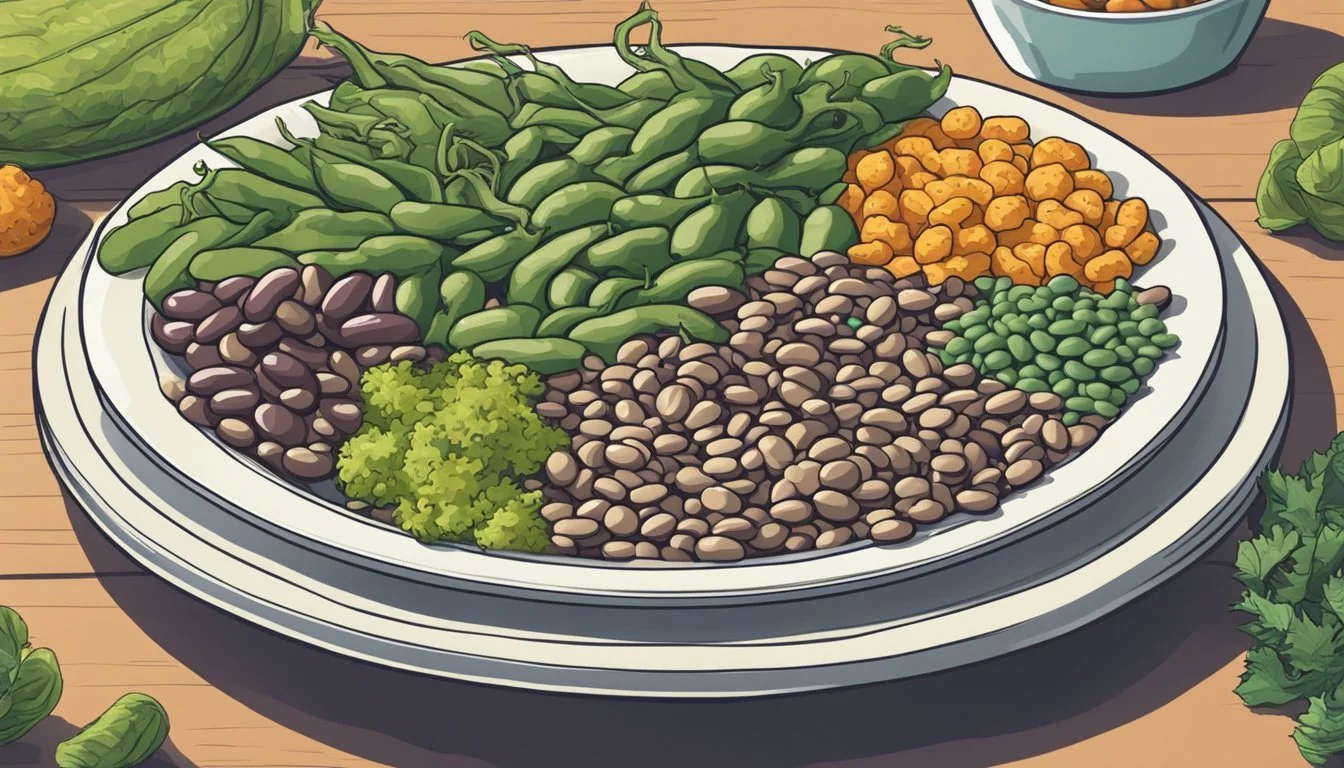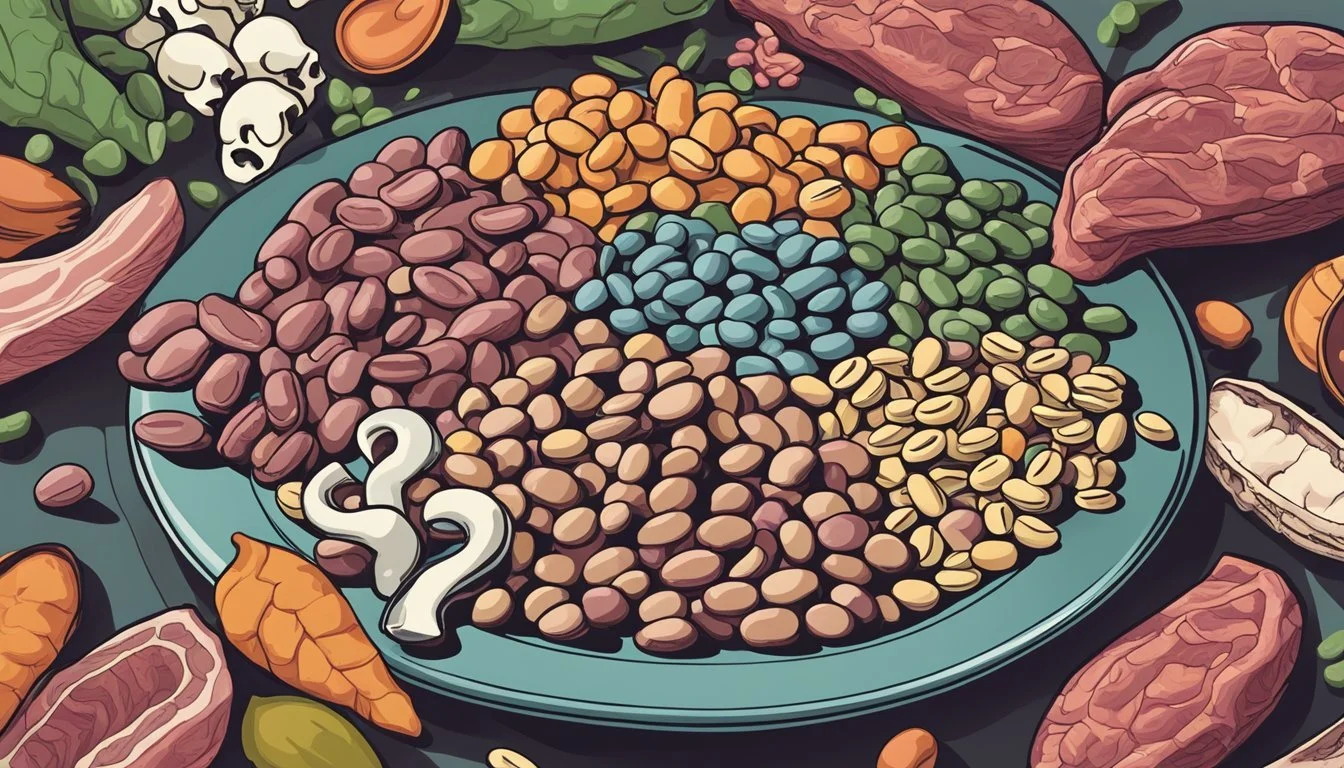Can You Eat Beans on the Carnivore Diet
Exploring Dietary Boundaries
The carnivore diet restricts followers to consume only animal-based products and eliminates the inclusion of all plant-based foods. It is a diet that consists primarily of meats, offal, fish, eggs, and certain dairy products. This way of eating emphasizes the consumption of animal proteins and fats, as they are considered the main source of nutrients within the regime.
Beans, considered a staple in many diets around the world, belong to the category of legumes — a group that is explicitly eliminated in a carnivore diet. The reason is the diet's focus on eliminating carbohydrates that come from plant sources. Proponents of the carnivore diet argue that animal products provide all the necessary nutrients required for human health, leaving no need for plant-based foods like beans.
The question of whether beans can be incorporated into a carnivore diet touches on a broader debate about dietary carbohydrates, nutrient density, and individual health goals. Those following the strict interpretation of the carnivore diet will find that beans, due to their plant origin, do not align with the diet's guidelines.
Understanding the Carnivore Diet
This section provides detailed insights into the carnivore diet, focusing on its definition, the types of food it encompasses, and its comparison to other dietary practices.
Definition and Core Principles
The carnivore diet is a restrictive regimen that centers around the consumption of animal products exclusively. It is grounded in the belief that human dietary needs can be fully met by animal flesh and products. Proponents argue that this diet provides all the necessary protein, fat, and vitamins through a natural, evolutionary approach to eating. Fundamental to the carnivore diet is the exclusion of plant-based foods, aligning with its core aim of high intake of animal fat and proteins.
Foods Included in the Carnivore Diet
The following tables exemplify the primary food groups and specific foods embraced by the carnivore diet:
Meat
Examples: Beef, pork, lamb
Organ Meats
Examples: Liver, kidney, heart
Poultry
Examples: Chicken, turkey, duck
Seafood
Examples: Fish, shellfish
Eggs
Examples: Chicken, duck
Certain Dairy
Examples: Butter, hard cheeses
Fats
Examples: Animal fat such as lard, tallow
The diet prioritizes fatty cuts of meat to enhance ketosis, a metabolic state where the body burns fat for energy due to the absence of carbohydrates.
Enjoy the convenience of doorstep delivery when you buy lard or tallow online!
Comparing Carnivore to Other Diets
When compared to other diets, the carnivore diet is more restrictive than a standard ketogenic diet which allows for low-carb plant foods and is significantly different from plant-based diets which exclude animal products. It is often regarded as an elimination diet, due to its potential in identifying food intolerances by systematically removing food groups. Unlike diets that balance plant and animal sources, the carnivore diet emphasizes consumption of vitamins and minerals through animal products, which also furnish essential fats for optimal health.
Health Benefits and Risks
Adopting a carnivore diet involves significant changes to one's eating patterns, centering on animal products and typically excluding plant-based foods. This section examines the potential health benefits and risks associated with a carnivore diet, in addition to an overview of available scientific research.
Potential Health Benefits
A carnivore diet is rich in proteins and fats that can provide essential nutrients for the body. The diet’s high protein intake may support muscle maintenance and growth. As it aligns with a ketogenic diet due to its low carbohydrate content, the body may enter a state of ketosis, which can lead to weight loss. Some individuals report improved blood sugar levels, which is particularly relevant for managing diabetes. Additionally, anecdotal evidence suggests that some people experience a reduction in inflammation and depressive symptoms while following this dietary pattern.
Possible Health Risks
However, a diet consisting solely of animal products carries risks. High intakes of saturated fat may increase cholesterol levels, which is a risk factor for heart disease. The exclusion of plant-based foods may lead to deficiencies in certain micronutrients and reduced fiber intake, potentially causing constipation. Since beans and other high-fiber foods are typically avoided, individuals may experience changes in gut health and blood sugar control. The carnivore diet restricts or eliminates many foods that are typically considered beneficial for health, leading to potential long-term health consequences.
Scientific Research Overview
The carnivore diet is a subject of much debate in the scientific community. Rigorous, peer-reviewed research on the long-term implications of strictly animal-based diets is limited. Short-term studies have highlighted potential benefits for weight loss and improvements in certain health markers associated with a ketogenic metabolic state. Further research is needed to comprehensively assess the effects of the carnivore diet on chronic diseases, nutrient deficiencies, and overall mortality. It's crucial for individuals considering this diet to carefully weigh the potential benefits against the risks and consult healthcare professionals.
Navigating the Do's and Don'ts
When transitioning to a carnivore diet, individuals should focus on including a variety of animal-based foods while excluding plant-based foods to adhere to the dietary framework.
Highly Recommended Foods
On the carnivore diet, one is encouraged to consume:
All types of meat: This includes beef, pork, lamb, chicken, and bison. Red meat (What wine goes well with red meat?) is particularly emphasized for its nutrient density.
Seafood: A variety of seafood such as fish, oysters, and other shellfish should be incorporated for their omega-3 fatty acids and other vital nutrients.
Organ Meats: Nutrient-rich options like beef liver and other organ meats are considered superfoods in this diet.
Eggs: They are a staple, providing high-quality protein and fats.
Dairy: Full-fat dairy products like cheese and butter are included by some advocates, although their inclusion can vary based on individual tolerance.
Fats: Animal fats, such as lard and bone marrow, are encouraged for their energy content and fat-soluble vitamins.
Foods to Avoid
The forbidden foods within this dietary approach include:
All plant-based foods: Specifically, vegetables, grains, seeds, nuts, and legumes (which include beans).
Carbohydrates & Sugars: Any foods high in carbohydrates or sugars, including fruits and added sugars, are to be eliminated, as this diet prioritizes fat and protein intake.
Fiber: As a plant-based component, fiber is naturally excluded from the carnivore diet, as it is found in vegetables, fruits, and other plant materials not consumed on the diet.
By adhering to these guidelines, individuals can navigate the dos and don'ts of the carnivore diet, ensuring proper adherence and potentially benefiting from the diet's proposed health outcomes.
Online shopping for fiber supplement is the smart choice for a seamless transaction!
Carnivore Diet and Nutrient Intake
The carnivore diet emphasizes the consumption of animal-based foods, which can provide a broad array of essential nutrients. However, attention must be paid to ensure that one's intake of vitamins and minerals is adequate and balanced.
Ensuring Adequate Vitamin and Mineral Intake
Animal-based foods are rich in certain nutrients, offering high-quality protein and various essential nutrients such as vitamins A, D, E, and B-complex, and minerals like iron, zinc, and selenium. In contrast, the diet lacks vitamin C, a nutrient commonly found in fruits and vegetables. However, proponents of the diet argue that the lower requirement for vitamin C on a low-carb, high-fat diet mitigates this concern. To ensure nutrient adequacy without supplementation, carnivores often consume:
Organ meats for vitamin A and B vitamins.
Bone broth for minerals like calcium and magnesium.
Fatty fish for omega-3 fatty acids and vitamin D.
Addressing Common Nutritional Concerns
The carnivore diet is a high-fat, moderate-protein, and almost zero-carbohydrate diet that puts the body in a state of ketosis. The diet's reliance on healthy fats from animal sources is necessary for energy and absorption of fat-soluble vitamins. However, skeptics raise concerns about the exclusion of plant-based foods, potential deficiencies in micronutrients like fiber, and the absence of antioxidants found in fruits and vegetables. Adequate consumption of micronutrients is crucial for maintaining homeostasis and supporting metabolic functions. To address these concerns, individuals on the carnivore diet are encouraged to consume a varied selection of animal-based foods, including:
Eggs and full-fat dairy for calcium and vitamin D.
Liver and other organ meats for their density in micronutrients.
Muscle meats and seafood for their high content of protein and essential fatty acids.
Meal Planning and Recipes
Proper planning and a variety of recipes are crucial to maintain a carnivorous diet that ensures the intake of essential nutrients. High-quality animal products like ribeye, salmon, and eggs are emphasized, offering simplicity and satisfaction in daily meals.
Daily Meal Plan Strategies
Effective meal planning on the carnivore diet revolves around selecting a rich assortment of animal-based foods.
Breakfast might include a hearty serving of eggs cooked in butter, paired with a slice of ribeye steak for a high-protein start to the day.
Lunch could feature a delicious portion of seared salmon or grilled tuna, offering essential fatty acids.
Dinner often sees red meat as the centerpiece, such as succulent lamb chops or a juicy pork belly.
Careful incorporation of seafood like mackerel and sardines ensures diversity, aiding in the provision of different nutrients that may be less prominent in red meat.
Simple Carnivore Diet Recipes
Preparing straightforward carnivore diet recipes ensures meals remain interesting and palatable.
Ribeye Steak: Season a high-quality ribeye with salt, and sear on high heat until reaching desired doneness. Let it rest before serving.
Eggs and Sardines Breakfast: Fry eggs in butter and serve with a side of sardines for an omega-3-rich breakfast option.
Tuna Steaks: Grill the tuna steaks after seasoning with salt and serve with a side of homemade aioli made from egg yolk and olive oil.
Include dairy products like cheese and heavy cream where permissible, to add variety and additional fat sources.
Tips for Eating Out and Social Occasions
Navigating eating out and social occasions requires one to be selective with their food choices.
Opt for seafood options like grilled mackerel if available.
Choose poultry dishes such as chicken breasts or thighs, ensuring no non-carnivore ingredients are included.
Request red meats like ribeye or lamb, cooked simply in butter or its natural fats, avoiding marinades or sauces.
By explaining dietary preferences to the host or chef, they can usually accommodate a carnivore diet-friendly meal, focusing on high-protein and high-fat animal products.
Adjusting to a Carnivore Lifestyle
Adapting to a carnivore lifestyle requires a period of transition, which includes shifts in food choices and navigation through social settings. Understanding the steps to smoothly transition and manage the dynamics of social and familial relationships is crucial for maintaining this diet.
Transitioning from a Standard Diet
Individuals embarking on a carnivore diet must shift from a diet that often includes a variety of plant-based foods to one solely comprised of animal products. The transition typically involves:
Eliminating all plant-based foods: This includes grains, legumes (like beans), fruits, and vegetables.
Focusing on nutrient-dense meats: Consumption should be centered around beef, poultry, fish, and other animal proteins.
Incorporating high-fat foods: Animal fats, such as butter and hard cheeses, may be included while monitoring tolerance.
It's essential for one to listen to their body during this period and to provide it with ample animal proteins and fats to sustain energy levels and satiety.
Dealing with Social and Family Dynamics
When individuals switch to a carnivore diet, they may face challenges in social gatherings and at the family dinner table. It's important to navigate these scenarios carefully:
At social events:
Choose venues that cater to a low-carb, high-protein diet to ease dining options.
Clearly communicate dietary preferences to hosts or chefs in advance.
Within the family setting:
Educate family members on the rationale behind the carnivore diet, emphasizing its focus on high-quality animal proteins and fats.
Prepare meals that can be easily adapted to suit both carnivore and non-carnivore diets to maintain harmony during shared meals.
Additional Considerations
When adopting the carnivore diet, one must pay close attention to the body's needs beyond just macronutrients. Hydration, maintaining electrolyte balance, incorporating physical activities, and considering the diet's long-term sustainability are critical elements for overall health.
Hydration and Electrolytes Balance
A person on the carnivore diet should ensure adequate hydration. While water is crucial, the balance of electrolytes like sodium, potassium, and magnesium is also vital. This balance can be maintained by consuming:
Water: essential for hydration, aim for at least 2-3 liters per day.
Bone broth: rich in minerals and can help supplement electrolytes.
Salt: adding to foods can aid in maintaining sodium levels, which are essential for nerve and muscle function.
Exercise and Physical Activity
Regular exercise is important for cardiovascular health and maintaining muscle mass, which can be supported by the high protein and body fat intake from the carnivore diet. Individuals should include:
Strength training: to support muscle synthesis and overall strength.
Cardiovascular exercise: such as walking or swimming, for heart health.
Long-Term Sustainability and Lifestyle Choices
The sustainability of a carnivore diet is influenced by one’s commitment and ability to adapt to a restricted way of eating. Lifestyle factors to consider include:
Variety within allowed foods: to prevent boredom and nutrient deficiencies.
Social and cultural factors: the diet may not align with common dietary practices, affecting social interactions.
Adapting this diet as a long-term lifestyle choice requires careful consideration of these facets to promote well-being and health.
Common Questions Answered
This section aims to clarify some widespread inquiries regarding the carnivore diet, specifically focusing on the inclusion of dairy, managing cravings for foods outside the diet, and understanding the necessity of supplements and medications.
Can You Have Dairy on a Carnivore Diet?
Dairy Products: On a carnivore diet, certain dairy products are permissible, often due to their low carbohydrate content and high animal fat.
Milk: Regular milk contains lactose, a sugar, and is generally avoided. However, heavy cream or butter, which are high in fat and low in carbs, might be acceptable.
Yogurt: Unsweetened, full-fat varieties can be included in moderation.
Cheese: Many individuals include hard and aged cheeses because of their high fat and protein content relative to lower lactose content.
One should verify the carbohydrate content to ensure these dairy items fit within the strict guidelines of their specific carnivore diet plan.
Handling Cravings for Non-Carnivore Foods
Individuals may experience cravings for plant-based foods which are restricted on the carnivore diet.
Cravings: Anecdotal strategies include increasing the intake of satiating animal fats or consuming more frequent meals to ward off cravings. Some find that cravings diminish over time as the body adjusts to a meat-focused diet.
The Role of Supplements and Medications
Supplements should be cautiously considered since the carnivore diet is predicated on obtaining nutrients from animal products alone.
Vitamin Supplements: Supplements may be unnecessary if a person's diet includes a variety of animal organs, seafood, and bone broth.
Medications: Existing medications should be continued as prescribed by a healthcare provider. Interactions between medications and diet should be regularly reviewed with a medical professional.
Myths and Misconceptions
Clarification and evidence-based insights are crucial when dissecting the myths and misconceptions surrounding the carnivore diet, especially concerning the inclusion of non-animal food items like beans.
Debunking Common Carnivore Diet Myths
Myth: Beans are permitted on a carnivore diet.
Fact: The carnivore diet strictly comprises animal products; no plant-based foods, including beans, are allowed.
Myth: A diet without plant-based foods lacks nutrition.
Fact: Proponents argue that animal products can provide all essential nutrients, although this is a subject of debate among nutritionists.
Understanding the Science Behind the Diet
Processed Foods: The carnivore diet excludes processed food, emphasizing whole, primarily unprocessed animal products.
Research: Studies comparing plant-based to animal-based diets are ongoing, and while some point to the health benefits of including plants, the carnivore diet focuses on anecdotal evidence and historical precedents.
Plant-Based Foods: Often lauded for their fiber and nutrient content, plant-based foods are considered non-essential or even harmful within this diet framework due to concerns over anti-nutrients or digestive irritants.






